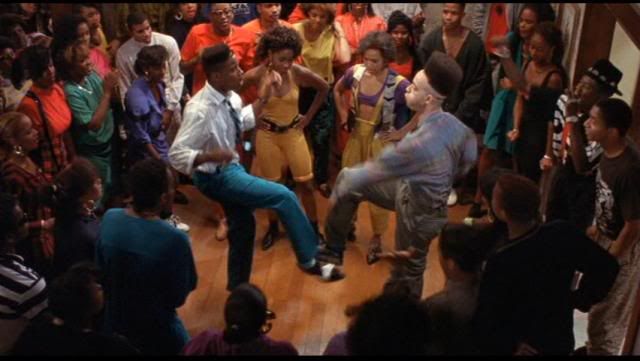i write a lot and not everything gets published or i need an immediate outlet to get my thoughts across. so there ya go.
Monday, July 31, 2006
the greatest hip-hop movie you cats forgot about
Cinematic excellence and hip-hop seldom go hand-in-hand. For example, I highly doubt that people are pushing for a special edition DVD release of the Ice Cube/Ice-T crime drama "Trespass" or that there's a cult following for the MC Lyte flick "Fly By Night," but there's at least one hip-hop movie that's held in high regard, "Wild Style."
What's so fascinating about "Wild Style" is that you pretty much get to see hip-hop culture as this raw, virginal force; this is especially true since the film was made during the hip-hop's infancy. It's an exciting movie to watch, for sure. Fast forward to 2004 and we're given, "Fade to Black," a documentary exhibiting Jay-Z's retirement show from Madison Square Garden.
While we currently have these two films to bookend hip-hop's film experience, what about the middle? What films can we count on to display what many people have regarded as the "golden age of hip-hop?" There's really only a loose checklist, held together by cast members -- "Juice" featuring a young, pre-gangsta Tupac, "Who's the Man?" featuring every name in hip-hop in 1992, "Cool as Ice" starring everybody's favorite rapper, Vanilla Ice.
Most people usually forget "House Party."
This 1989 Reginald Hudlin film is probably the milemarker for hip-hop's golden age; let's forget the absence of the Native Tongues (who are usually referenced), but let's look at it as a snapshot of the late '80s/early '90s. Committed to celluloid, you have Groove B. Chill's faux Dana Dane persona, Kid-N-Play's willingness to dance (when's the last time you saw a rapper bust out moves like them?), Martin Lawrence's secret vinyl arsenal, and most of all, the soundtrack -- a series of pre-New Jack Swing singles and Flavor Flav party raps.
Ultimately though, "House Party" embraces the suburban take on hip-hop, in all its colorful, Cross Colour glory. Films such as "Wild Style" and "8 Mile" depict hip-hop as an urban experience, glossing over its commercial appeal for a sense of grit. But in "House Party," Kid-N-Play -- our protagonists -- are suburban teens, one of whom (Play) is a spoiled, upper middle class high school senior. But he can still flow real well, thus proving that thug life doesn't mean mic skills.
Though "House Party's" subsequent sequels were as vapid as that new Paris Hilton record, the original stands as a testament that there was once a time where middle America could still embrace good hip-hop, that there was once a time when white kids didn't try to dress like they were in Onyx, and more importantly, it reminds us all that there was once a time when hip-hop was actually fun.

No comments:
Post a Comment